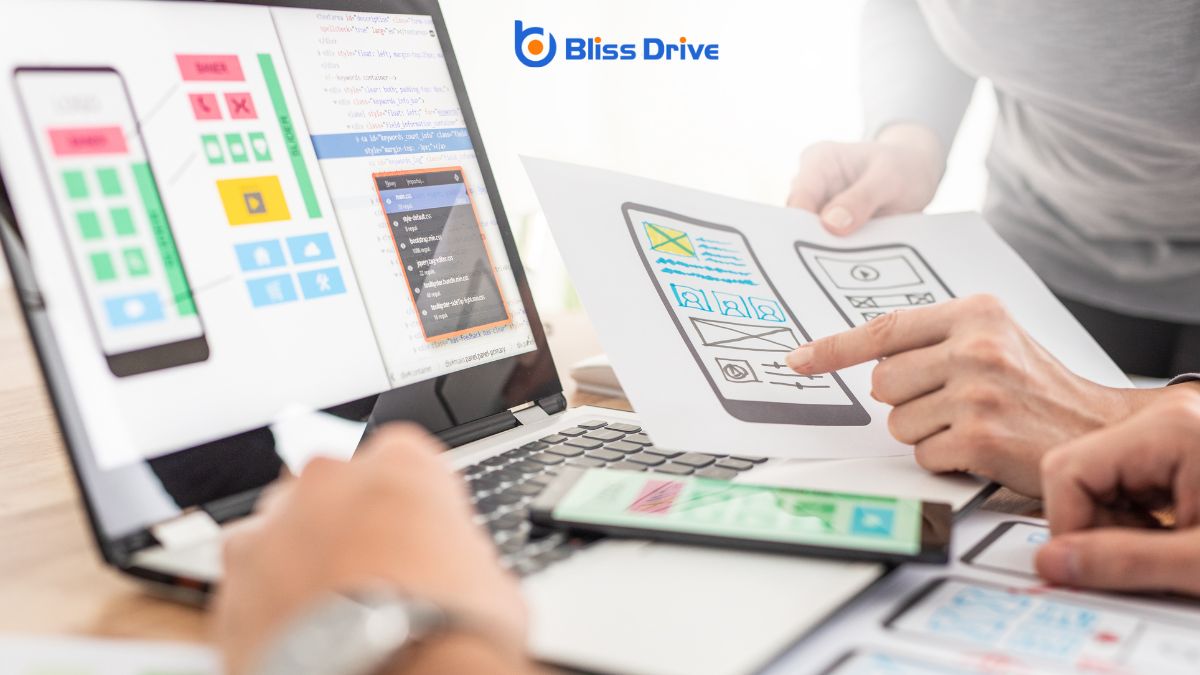Learn More About Us

When crafting a mobile app, embrace cultural sensitivity by understanding color symbolism, offering multilingual options, and respecting aesthetic preferences. Tailor your design to align with local norms, from color usage to navigation styles. Collaborate with localization experts for a nuanced approach, ensuring cultural symbols don’t confuse or offend. Conduct thorough research and feedback analysis to fine-tune the user experience. There’s a world of fascinating cultural nuances that will elevate your app's appeal.

When designing mobile applications for a global audience, you must consider how different cultures perceive color. Colors evoke emotions and meanings that vary widely across the world.
For instance, in Western cultures, white often symbolizes purity and peace, while in some Asian cultures, it’s associated with mourning. Red can be seen as a color of danger or love in Western contexts, but it represents good fortune and celebration in China.
By understanding these cultural nuances, you can create a more inclusive and appealing app interface. It's crucial to research the color preferences and symbolic meanings in your target markets.
This approach guarantees your design resonates positively, avoiding misinterpretations that could alienate users or convey unintended messages.
When designing mobile interfaces, you'll want to prioritize multilingual options to guarantee accessibility for users worldwide.
It's vital to adapt content to fit regional contexts, taking into account local expressions and cultural nuances.
Don’t overlook the importance of cultural symbol sensitivity, as missteps here can leadA potential customer referred by an affiliate who has shown interest in the product or service but h... to misunderstandings or offense.
Creating multilingual user interfaces is vital for reaching a global audience and guaranteeing inclusivity. When designing your mobile app, consider offering language options that cater to your target markets.
Start by identifying the most spoken languages among your users. Integrate translation and localization tools to adapt content accurately and culturally. Ascertain text expansion doesn’t break your design, as some languages require more space than others.
Pay attention to directionality in languages like Arabic or Hebrew, which read right-to-left. This might require a complete layout shift.
Testing your app in each language setting is important to ensure everything functions smoothly. By prioritizing multilingual support, you're not just expanding your reach but also showing respect and understanding towards diverse user needs.
Multilingual user interfaces lay the foundation for effective communication, but true engagementThe interactions that users have with a brand’s content on social media. requires a deeper understanding of regional nuances.
To adapt content effectively, you need to go beyond mere translation. Consider regional dialects, slang, and cultural references that resonate with local users. It’s crucial to research local customs and preferences, ensuring your content feels authentic and relevant.
Localization strategies should involve adapting not just language, but also visuals, units of measurement, and date formats. Tailoring content to align with local holidays or events can also enhance user experience.
Don’t assume one-size-fits-all; what works in one region mightn't translate well in another. By prioritizing regional content adaptation, you’ll create a mobile design that feels personal and engaging to diverse audiences.
While designing for a global audience, it's essential to recognize that cultural symbols carry different meanings across various regions. You must guarantee that the symbols used in your mobile app don't inadvertently offend or confuse users.
For instance, a thumbs-up emoji might be positive in one culture but offensive in another. Pay attention to color choices as well; red signifies good fortune in some cultures but danger in others.
Consider language and localization strategies by adapting content to fit local contexts. This means translating text accurately and considering idiomatic expressions that resonate with specific audiences.
Collaborate with localization experts to navigate these nuances effectively. By being culturally sensitive, you build trust and make your app more welcoming and accessible to a diverse user base.
Understanding cultural aesthetic preferences is essential when designing mobile applications for a global audience. You must recognize that aesthetics encompass more than just color and imagery—they include layout, typography, and even animation styles. Different cultures may favor minimalistic designs, while others appreciate more intricate visuals. By researching and understanding these preferences, you’ll create an app that resonates with users across various cultural backgrounds.
Consider cultural symbolism in color usage; for instance, while red signifies luck in China, it might represent danger elsewhere. Aligning your design with cultural tastes guarantees that users feel comfortable and connected.
Additionally, pay attention to font choices, as some scripts convey different meanings or levels of formality. Ultimately, respecting these nuances enhances user engagementThe level of interaction and involvement users have with social media content. and satisfaction.
When designing user interfaces for a global market, you must consider how cultural differences impact usability and functionality.
Colors, symbols, and even layout can hold different meanings across cultures. For instance, while green often signals "go" in Western cultures, it mightn't carry the same meaning elsewhere.
You should also be aware of reading patterns, like left-to-right versus right-to-left, which influence navigation design.
Consider language nuances. Some languages expand text length, affecting design elements like buttons and menus. Make certain your interface accommodates diverse languages seamlessly.
Icons might seem universal, but interpretations vary. A thumbs-up symbol might be positive in one culture, but offensive in another.
Test your design with users from various cultural backgrounds to confirm it resonates universally.
Recognizing cultural nuances in UI design sets the stage for tailoring functionality to fit diverse cultural norms.
To craft a mobile experience that resonates globally, you need to adapt your app's functionality in several key ways:
Respect for cultural differences is vital when addressing content sensitivity and appropriateness in mobile design. You need to be aware of how images, symbols, and language might be perceived differently across various cultures.
An image that’s acceptable in one region might be offensive in another. It’s important to research cultural taboos and preferences to avoid inadvertently offending users. Language can also be tricky; certain phrases or words mightn't translate well or could have negative connotations elsewhere.
Pay attention to color choices, too, as colors carry different meanings globally. You should consider consulting with locals or cultural experts to guarantee your content aligns with the audience's values and norms.
This effort can greatly enhance user satisfaction and brand reputation.
Understanding and catering to diverse navigation preferences in mobile design is essential for creating an intuitive user experience. Users from different cultural backgrounds often have varying expectations and habits, influencing how they navigate apps.
To design effectively, consider these strategies:
While designing mobile experiences, incorporating cultural context is essential for ensuring that users from various backgrounds feel understood and valued.
You should consider how language, symbols, and color schemes impact user perceptions. For instance, certain colors might carry different meanings across cultures—red signifies luck in China but warns of danger in the West.
Language nuances also matter; idioms or phrases may not translate well, potentially confusing users.
You’ll need to research cultural preferences and integrate them into your design. Understanding local customs, traditions, and user behaviors can guide you in creating relevant and relatable content.

Gaining insights into cultural nuances is key, but how do you know if your mobile design resonates with a global audience?
Start by evaluating feedback from diverse user groups. Here’s how you can do it effectively:
These steps will help you refine your design to better suit a global user base.
In mobile design, you need to prioritize cultural considerations to guarantee global appeal. By understanding color symbolism, you’ll convey the right emotions across regions. Language localization and adapting to cultural aesthetics will enhance the user experience. Don't forget to tailor functionality to align with cultural norms and guarantee content is sensitive and appropriate. Design interfaces that respect diverse navigation preferences and incorporate cultural contexts. Always seek and evaluate feedback from a global user base to continually improve.
